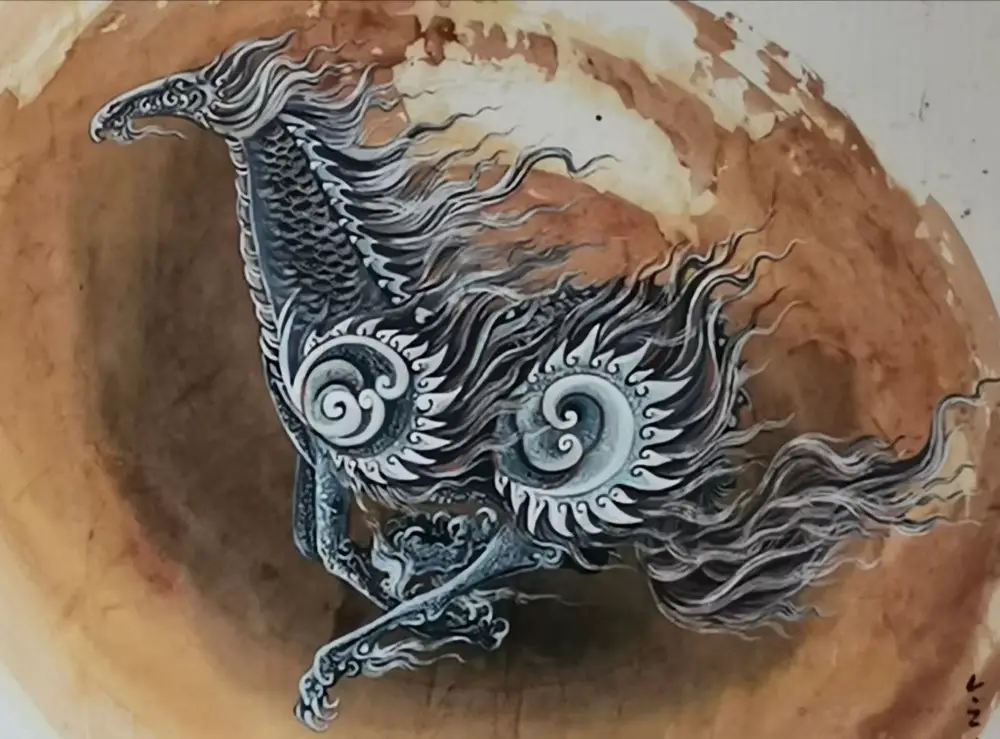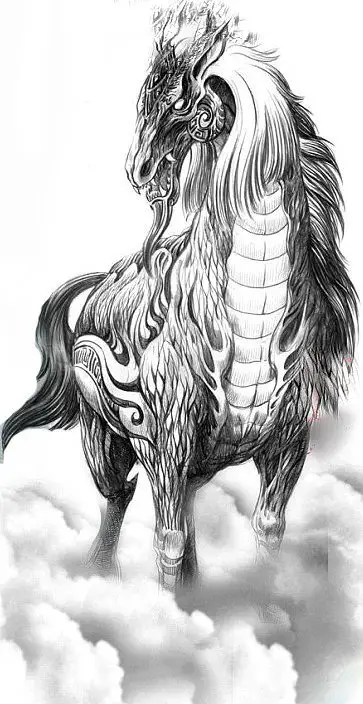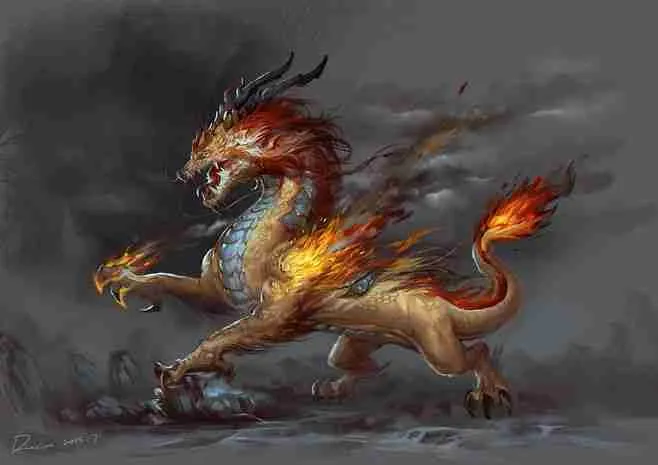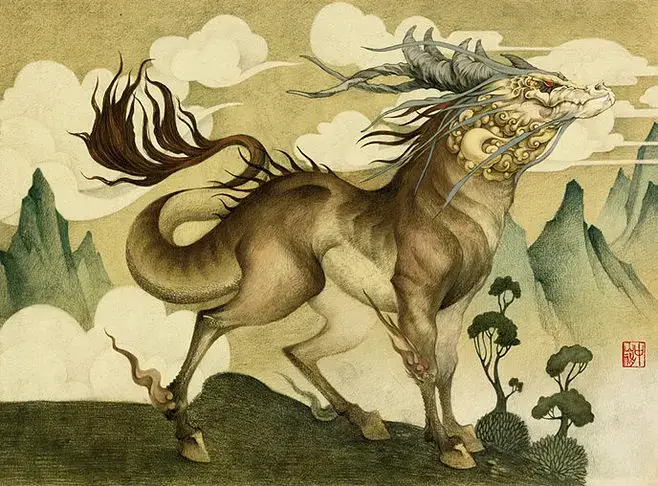Numerous creatures from mythology and folklore have always piqued people’s interest. The winged horse with dragon scales is an intriguing example; it possesses the grace of a horse and the power of a dragon. Here, we’ll investigate the identity of this mysterious beast, its various names, and its various mythological origins.
What is a Horse Dragon Called?

The sphinx, gryphon, and centaur are all well-known examples of the common theme in mythology and folklore of animals with human characteristics. The horse dragon, a fantastical creature that combines the grace of a horse with the power of a dragon, is another popular subject of wonder.
Depending on the culture or mythology, the horse dragon goes by a different name. Longma literally translates to “dragon horse,” and it is this name that is used to refer to the horse dragon in Chinese mythology. This fantastical beast has a dragon’s tail and wings in addition to a horse’s head and body. It was widely held that the Longma possessed mystical powers, including the ability to influence the climate and produce rainfall. Also, emperors and kings frequently rode them because they were seen as a symbol of power and success.
The horse dragon is known by many names in Western mythology, including “dragon horse,” “dragon steed,” and “dragon mount.” The dragon horse, in contrast to the Longma, a creature of Chinese mythology, appears in a number of Western folktales. It’s a common trope to have knights or warriors mount these formidable beasts and charge into battle.
Multiple interpretations and symbols have been ascribed to the horse dragon. The Longma is a mythical beast that represents strength and good fortune in Chinese mythology. Some people believe that if they see a Longma, they will achieve great success in life. Western mythology’s dragon horse, on the other hand, is frequently depicted as a heroic figure. It’s a mythical beast linked to knights and the ideals they represent.
Dragon Horse in Chinese Mythology

The Longma, or “dragon horse” as it is sometimes translated, is a legendary beast from Chinese mythology. It’s a mythical beast that looks like a cross between a horse and a dragon and is just as fierce and dangerous as either one.
The Longma is winged and covered in dragon scales in addition to having a horse’s head and body. The ability to fly, swim, and walk the earth gives this creature divine status. It was thought to have supernatural abilities, such as the ability to control the weather and bring rain, and so was frequently depicted in artwork as a symbol of power and good fortune.
Longma was first created during the Qin Dynasty (221–206 BCE). During this era, the Longma was seen as a symbol of success and wealth, and it was frequently depicted as a mighty creature ridden by emperors and kings. Its powers as a weather manipulator and a re-router of waterways and mountain ranges were widely believed to extend to both.
The Longma was also significant in Chinese mythology. A Longma in The Dragon King’s Daughter develops feelings for a princess and decides to become human so that he can be with her. The Dragon King, the Longma’s father, is not happy about the engagement and issues a number of tests to the princess. When she overcomes her obstacles, the princess is finally able to marry the Longma, and the two of them live happily ever after.
The Longma is a Chinese mythological creature that is frequently confused with the Kirin. The Kirin resembles a cross between a deer and a dragon with a horse’s head. The gentle creature is often portrayed as a source of joy and fortune. The Longma, on the other hand, is a formidable beast that heroes and emperors rode into battle.
Longma vs. Kirin

There are two mythical beings from Chinese mythology, the Longma and the Kirin, that are frequently misunderstood to be the same thing. Aside from their similarities, these creatures couldn’t be more dissimilar.
The Longma is a mythical creature with a horse’s head and body, dragon’s scales and wings. It’s a fearsome beast that emperors and heroes frequently rode into battle atop. It was thought to possess supernatural abilities, such as the ability to control the weather and bring rain, and thus was associated with power, prosperity, and good fortune.
Whereas the Kirin is composed of a deer’s body and a dragon’s scales and a horse’s head. It’s a happy and lucky animal that doesn’t cause any trouble. It is said to only appear in periods of great prosperity and harmony, and is therefore frequently depicted as a symbol of wisdom and enlightenment.
Though they share a common trait—dragon scales—the Longma and the Kirin are two entirely different creatures. The Longma symbolises strength and power, while the Kirin represents wisdom and luck. In addition, the Longma has a horse’s body and the Kirin, a deer’s.
The Longma and Kirin are two of the four heavenly creatures in Chinese mythology; the others are the phoenix and the turtle. When taken as a whole, they symbolise the cosmic pursuit of equilibrium and peace. Both the Longma and the Kirin, despite their differences in function and symbolism, are significant creatures in Chinese mythology that continue to captivate and inspire readers around the world.
how old is the winged horse with dragon scales
The Longma, a dragon-scaled, winged horse from Chinese mythology, has been around for a very long time. Given its ancient roots, pinpointing the exact age of the Longma is a challenging task.
The Qin Dynasty is where we find the earliest mention of the Longma (221-206 BCE). The Longma was depicted in art as a mighty creature, often ridden by emperors and kings, and was a symbol of wealth and good fortune during this time. As a result of its supernatural abilities, it became a significant symbol in Chinese mythology, and is still used today.
The Longma’s significance in Chinese mythology and culture has endured over the centuries. Its fame has spread beyond China thanks to the many representations of it in art, literature, and film. The Longma has inspired and fascinated people for centuries, and it continues to do so today in China and around the world.
Age of the Winged Horse with Dragon Scales

During the Qin Dynasty, records of the Longma first appeared in writing (221-206 BCE). At the time, it represented authority and good fortune, and artists frequently depicted emperors and kings atop its back as if it were a majestic creature. Supernatural abilities attributed to the Longma in Chinese mythology include the ability to influence the weather and bring rain.
A jade sculpture from the Han Dynasty (206 BCE – 220 CE) is the earliest representation of the Longma ever discovered. Numerous Chinese texts, such as the Shan Hai Jing, an anthology of Chinese myths and legends, also make reference to the beast.
The Longma’s fame has only increased through the ages. It was a symbol of the harmony between heaven and earth during the Tang Dynasty (618-907 CE). Artists and writers of the Song Dynasty (960-1279 CE) frequently portrayed it as a mighty creature with the ability to alter the flow of rivers and the shape of mountains.
Even in modern times, the Longma has maintained its place in Chinese mythology and culture. The phenomenon has been portrayed in a wide range of media, from movies and video games to books. The Longma is widely used as a symbol of power, bravery, and success in contemporary Chinese culture.
The Longma has been around for a very long time; its roots can be traced all the way back to ancient China. Longma has been a popular topic in Chinese art, literature, and culture for centuries, despite its antiquity. The Longma’s legacy as a symbol of power, good fortune, and supernatural ability lives on today, and it continues to inspire and fascinate people all over the world.
winged horse with dragon scales vs unicorn

Both the unicorn and the winged horse with dragon scales are legendary creatures with a reputation for grace and beauty. Despite this, there is a noticeable visual and cultural distinction between the two.
The Longma, or dragon-scaled winged horse, appears in Chinese mythology typically as a winged horse with dragon-like scales and wings. Power, good fortune, and the ability to do things like alter the flow of rivers and move mountains are all attributes commonly associated with it.
Unicorns, on the other hand, are a mythical creature from European folklore that are typically depicted as horses with a single horn on their forehead. It is believed to have the power to disinfect water and treat various illnesses because of its association with these virtues.
Although both animals are portrayed in art as beautiful and graceful, they are fundamentally different and have different cultural connotations. When compared to the unicorn, which is associated with purity and healing, the Longma represents power and supernatural abilities. But the mythical winged horse with dragon scales and the mythical unicorn continue to be depicted in art, literature, and popular culture because they continue to inspire and captivate people everywhere.
In conclusion, the mythical winged horse covered in dragon scales has captivated humans for centuries. Its form and symbolism may change from one culture or myth to another, but in most cases it is a symbol of authority, success, and good fortune. The Longma, or the dragon horse, is a legendary animal that has long served as a creative catalyst for people all over the world.